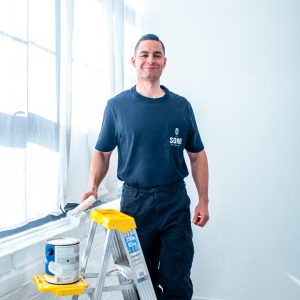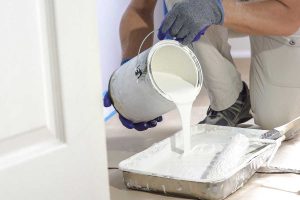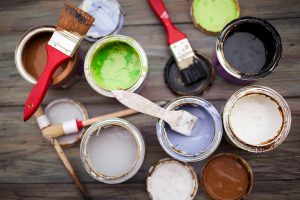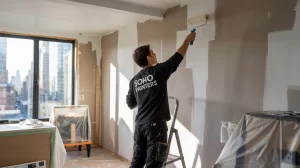For many home improvement DIYers, Bondo is one of the most useful substances out there. Although originally formulated for auto body repair, it can also be used for various home repair works such as for rotted window sills, patching drywall, and even restoring worn out furniture.
However, one of the most common concerns of newbies is if you can paint Bondo without primer. The short answer? No, you should not paint directly over body filler. Bondo will absorb the paint if not primed and it will not look good.
In this article, we will share a few guidelines on how to use Bondo body filler on wood for your home improvement project.
Using Bondo on Wood
Bondo is an affordable material that costs much cheaper than other wood fillers. It can be used on wood because it dries quickly, allowing for timely repairs and multiple coats to be applied at a shorter amount of time compared to other repair methods. According to the manufacturer, it cures in only 20 minutes, allowing for same-day repairs.
Because it bonds to itself, you can layer multiple coats to achieve your desired shape. Also, Bondo is effective for long-term repairs because it doesn’t shrink.
How to Use Bondo Body Filler on Wood
Aside from not painting directly over Bondo, here are a few important things to keep in mind if this is your first time using this body filler for your home improvement project.
1. Clean and remove the old material.
The very first step in using Bondo for your home repair is to remove any rotten, loose, or old material from the wood. By using tools such as hammer, chisel, pliers, and pry bar, you can get rid of weakened material.
You can check the remaining wood’s condition by pushing the end of a screwdriver into it and observing if it crumbles. If it does, then it needs to be replaced. Next, get rid of wood chips and dust.
Before you move on to the next step, ensure that the wood is completely dry before using Bondo so the material will stick well.
2. Use wood hardener.
This liquid substance penetrates the wood fibers and binds them, making them effective for turning rotten wood into solid material that can repel moisture.
While using wood hardener is not mandatory, it is useful when repairing areas that suffered water damage. Exterior surfaces such as windows and decks can benefit from wood hardener.
Make sure that you follow the instructions for proper application and leave it to dry before continuing to the next step.
3. Prepare the surface for Bondo.
The preparation required depends on the size of your repair project. For instance, if you are making a large repair, you might want to drive several screws into the material to add some form of anchor for the Bondo and give it more surface area to bind onto.
If you’re working on wood with large gaps, you might want to consider cutting a piece of wood to fill the majority of the gap and then fill the remaining area with Bondo to reduce the amount of Bondo you need to use.
4. Mix it up.
When you’re done preparing the surface, it’s time to mix the two parts of the resin. There are different types of Bondo, but many prefer the red-colored one so it’s easy to tell if you’ve managed to mix it into the putty properly. When the two parts are mixed together, it will turn pinkish in color.
The rule of thumb is 1 inch hardener per golf ball-sized putty. If you need to apply several coats of Bondo, mix several small batches instead of a large batch. The reason behind this is that it dries out too quickly, and when it does, it will become too gummy and difficult to shape. It might even harden faster during hot weather conditions, so it’s recommended to perform the repair when the temperature is not too high.
Also, keep in mind that Bondo is a strong substance and you need to use plastic gloves and a safety mask when working with it.
5. Apply Bondo to the surface.
Using a putty knife, scoop some of the substance and apply it to the gap. Try your best to shape it as close as your desired finished look because it is difficult to sand it to your intended shape once it hardens completely.
Use multiple coats if the area is too wide or deep.
6. Sand away the excess Bondo.
Once the Bondo is hard enough to sand, it’s time to remove the excess material until you manage to achieve a nice finish. You might want to use a power sander to make the task much easier.
Also, don’t forget to use a mask while sanding to avoid breathing in the dust.
7. Applying primer and paint.
Finally, apply a primer and a few coats of paint to make the repaired area much more attractive. Not only will the paint stick better when you use a primer, but it will last longer as well.
Make sure to use a fill primer and not epoxy for Bondo. As mentioned, not applying primer is not recommended because it will absorb the paint.
The Best Painting Contractor in New York
Maintaining and improving your home can be a lot of work. However, if you want to boost the value of your home without going through all the hassle, it’s recommended that you hire a professional contractor near you to do the tedious and exhausting work for you.
Soho Painters is the most reputable painting company in New York. We work on both residential and commercial painting projects, including interior painting, drywall installation, custom murals, wallpaper installation, and even power washing.
So if you are working on a home improvement project, contact us today and let’s make something awesome together!





